Managing Rhizomania, a new disease for Michigan red beets
Rhizomania-resistant red beet varieties and cultural practices can limit Rhizomania.

Rhizomania is a new disease for Michigan’s red beets. Management should focus on (1) limiting spread among fields and (2) growing resistant cultivars in infested fields.
Limiting spread of Rhizomania
Once Rhizomania is detected on your farm, do everything you can to avoid spreading it. Anything that carries soil from infested fields can introduce the pathogen to new locations. To minimize spread:
- Power-wash equipment with soapy water after working in infested fields. This includes tillage equipment, planters, harvest cribs and wheels of tractors, sprayers and wagons.
- Work infested fields after non-infested ones. This limits moving soil from infested to non-infested fields.
- Avoid dumping culls into production fields. Both the cull beets and soil clinging to them can carry the pathogens.
- Use these practices every year for infested ground. These practices are important even in years you are not growing beets on infested ground, as the soil will still contain the pathogen that causes the disease.
Minimizing spread is critical because the fungus that carries Rhizomania forms survival structures called cytosori that can persist for a decade. In fields where the disease is present, resistant cultivars are the main management tactic available for growers.
Resistant cultivars
Resistant varieties are the primary way this disease has been managed in European table beet production. In 2019, Michigan State University Extension worked with a grower collaborator to observe how available cultivars look under Michigan growing conditions. In late April 2019, strips of four resistant and one susceptible cultivar were sown in a west Michigan field known to have Rhizomania. Overall, beets of resistant cultivars had less hairy tap roots and more normal tops compared to the susceptible cultivar. Resistant beet varieties showed variability in root shape; not all were globe shaped.
Pictures of each cultivar are below. If you see symptoms of Rhizomania in your table beets, please consider submitting a sample of beets with symptoms to MSU Plant & Pest Diagnostics.
Red Ace F1 (Sakata, 53 days, Rhizomania susceptible)
The susceptible cultivar Red Ace showed typical Rhizomania symptoms. Beets showed excessive growth of fine roots on the main taproot, giving them a bearded appearance (Figure 1). On some beets, petiole scars were visible further down the beet (Figure 2).
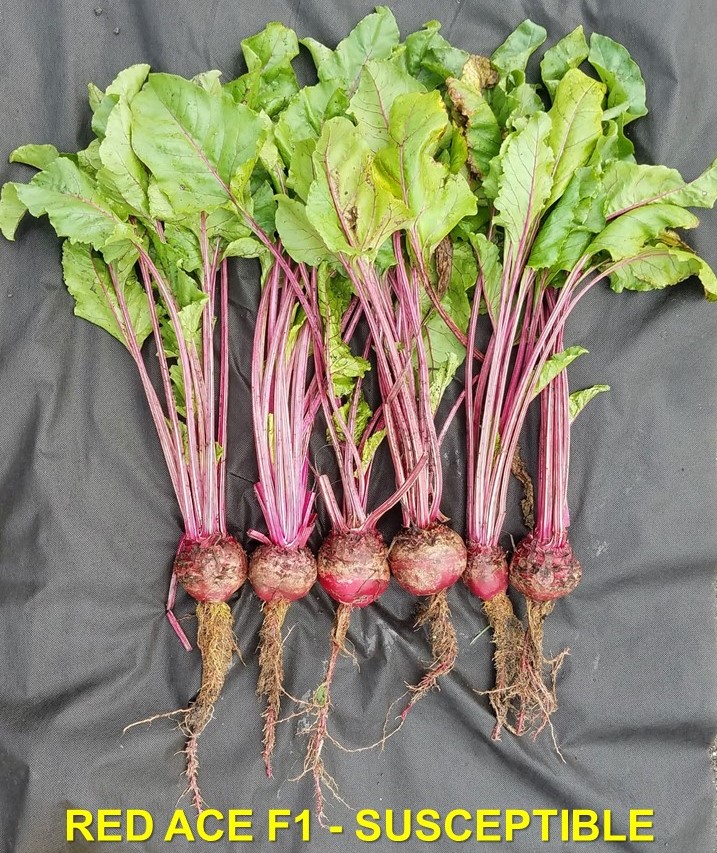
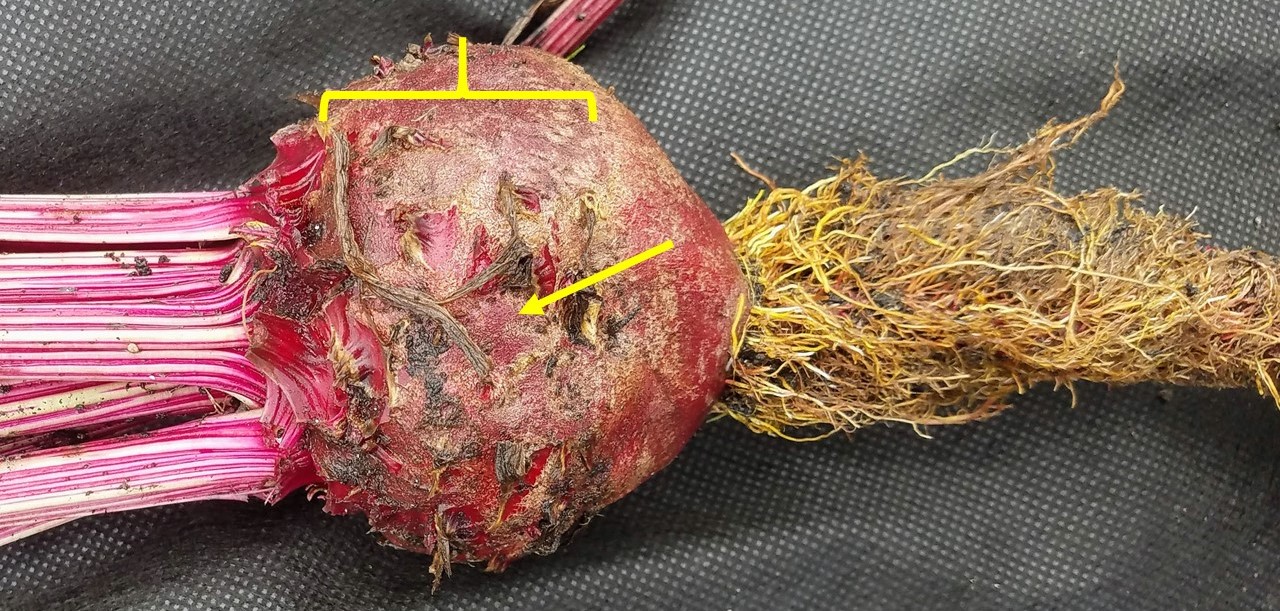
Grenade F1 (Vilmorin, ~50-55 days, Rhizomania resistant)
Taproots were much less hairy then the susceptible variety (Figures 3 and 4) with less petiole scarring down the side (Figures 4 and 5). Root shape was variable (Figure 4).
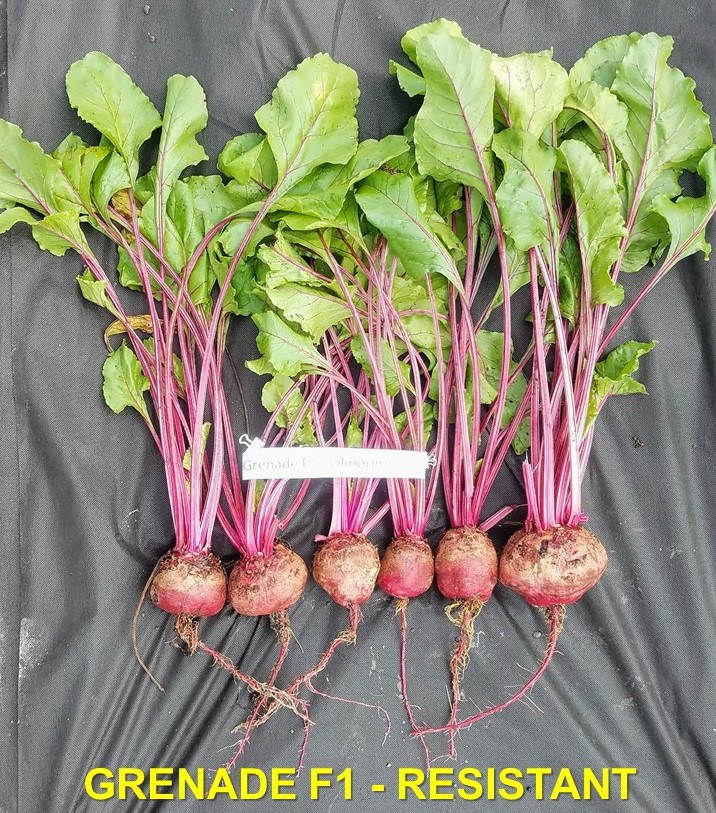
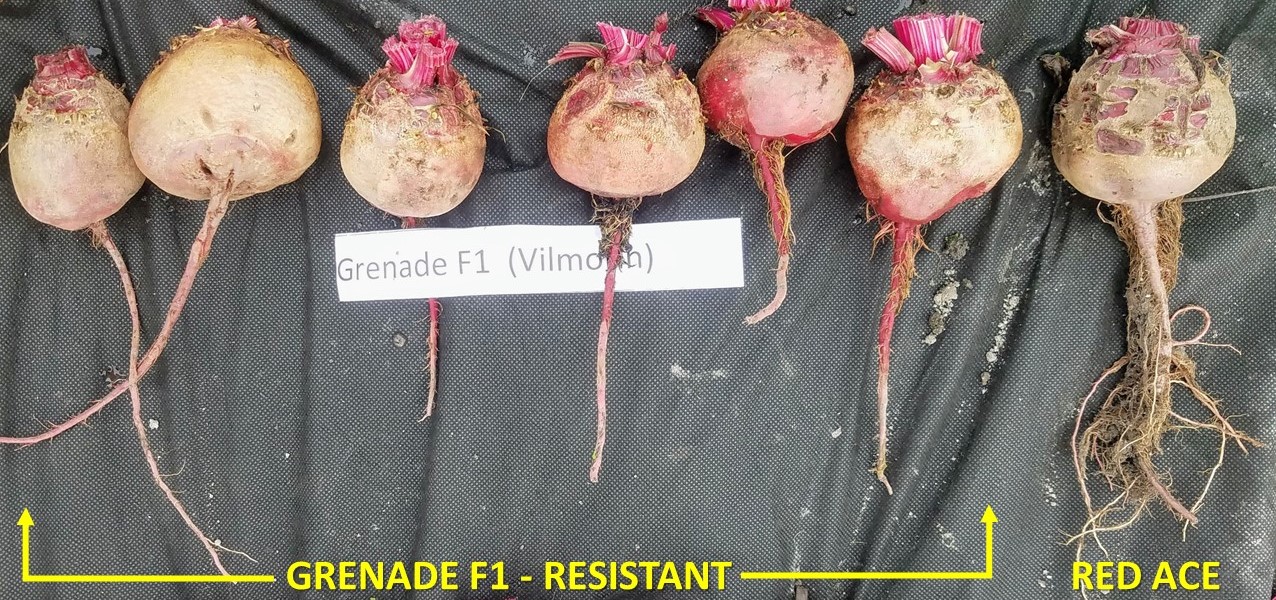
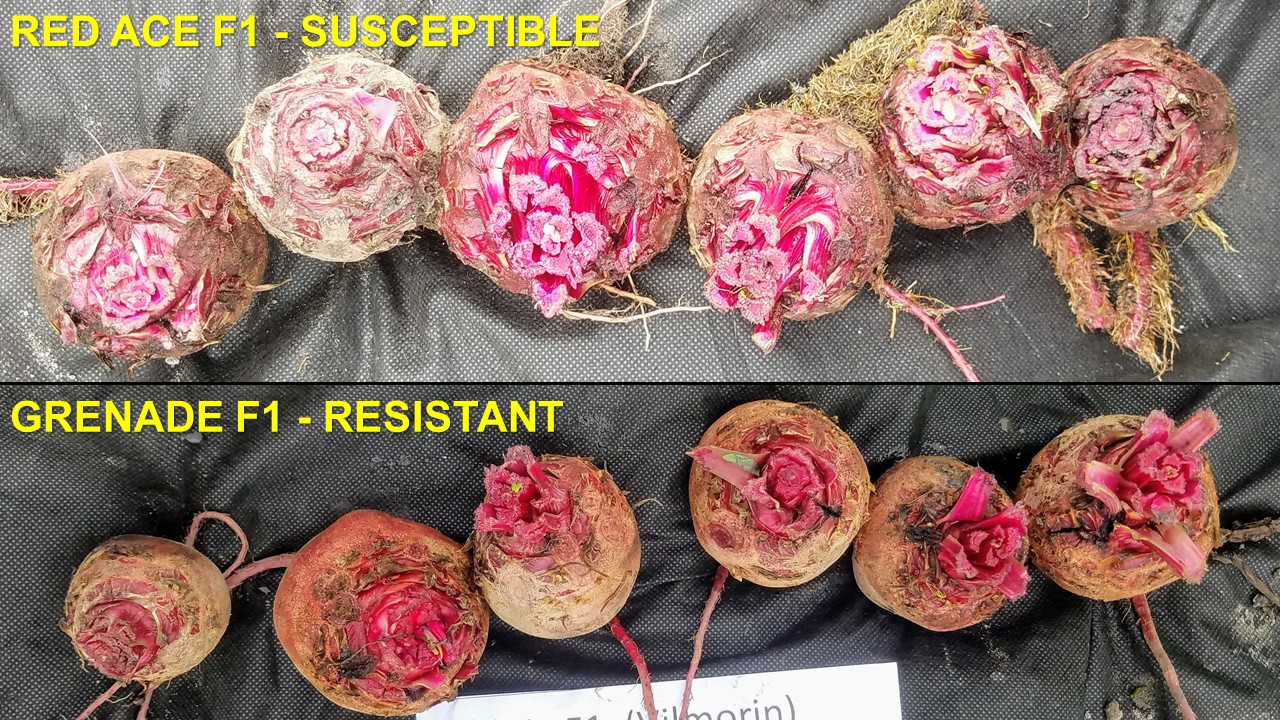
Redval F1 (Vilmorin, ~50-55 days, Rhizomania resistant)
Taproots were less hairy than the susceptible variety (Figures 6 and 7) with less petiole scarring down the side (Figures 7 and 8). Root shape was variable (Figure 7).
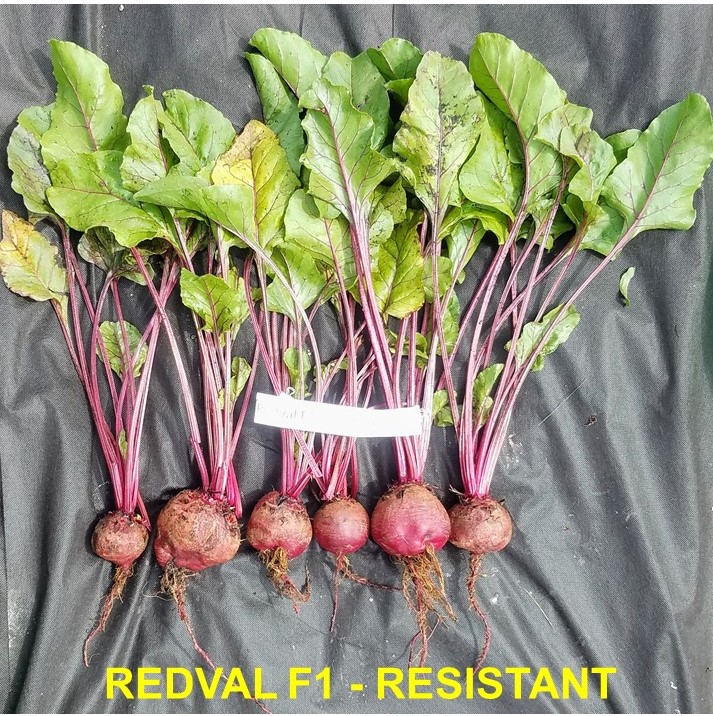
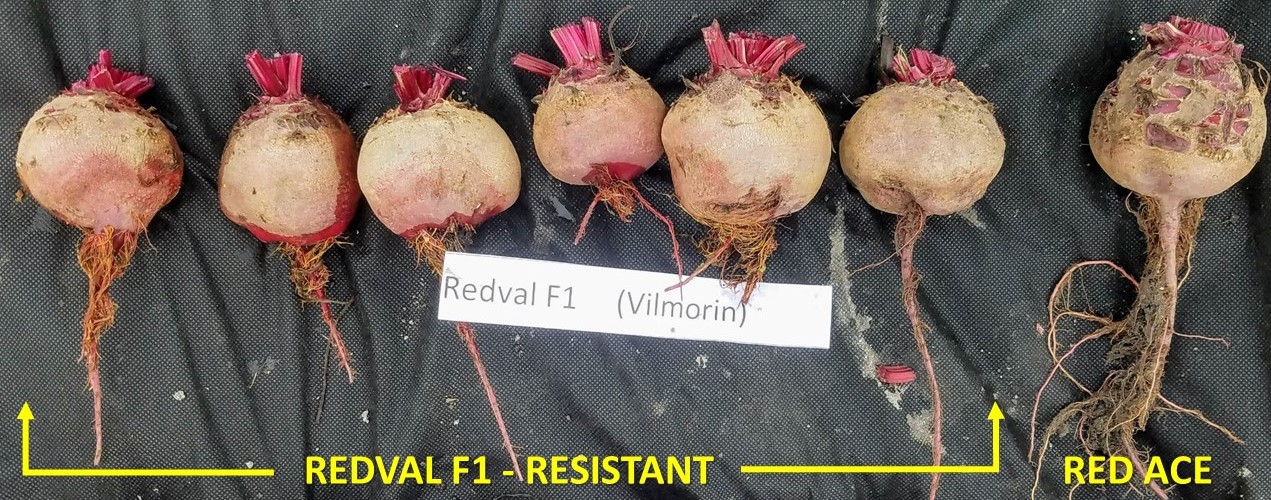
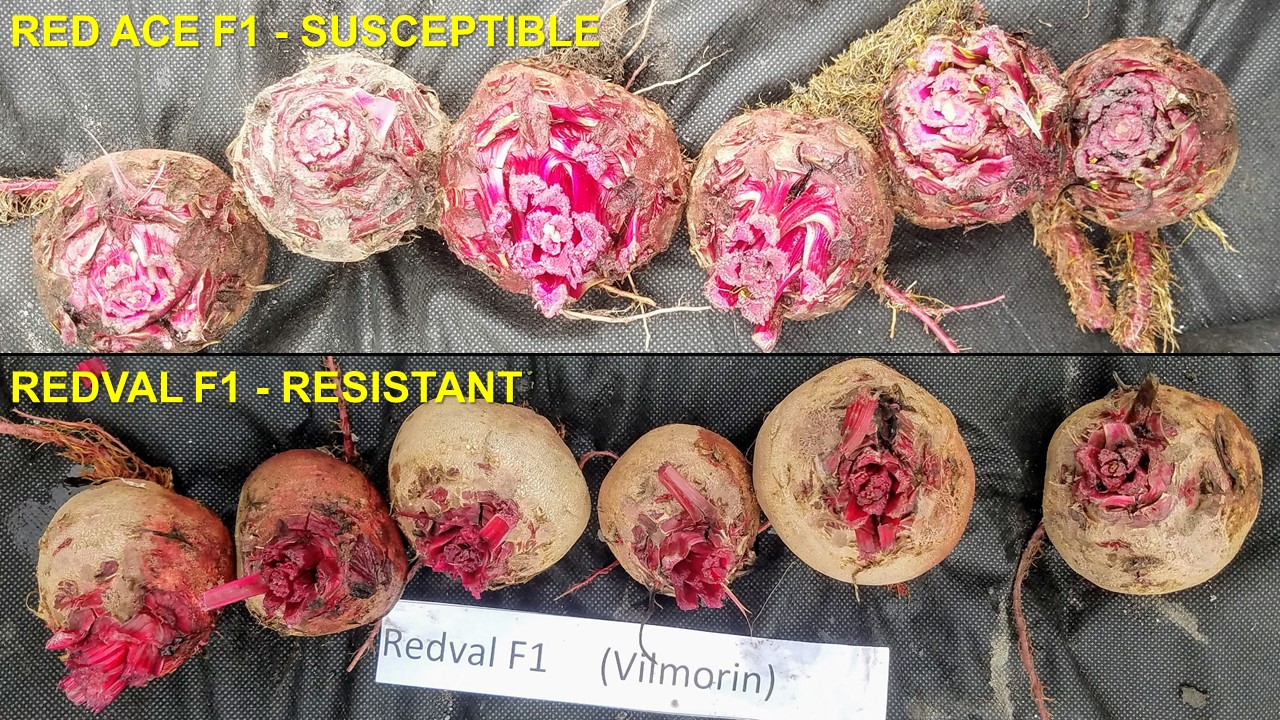
Manzu F1 (Bejo, ~53 days, Rhizomania resistant)
Taproots were much less hairy then the susceptible variety (Figures 9 and 10) with less petiole scarring down the side (Figures 10 and 11). Root shape was variable (Figure 10).
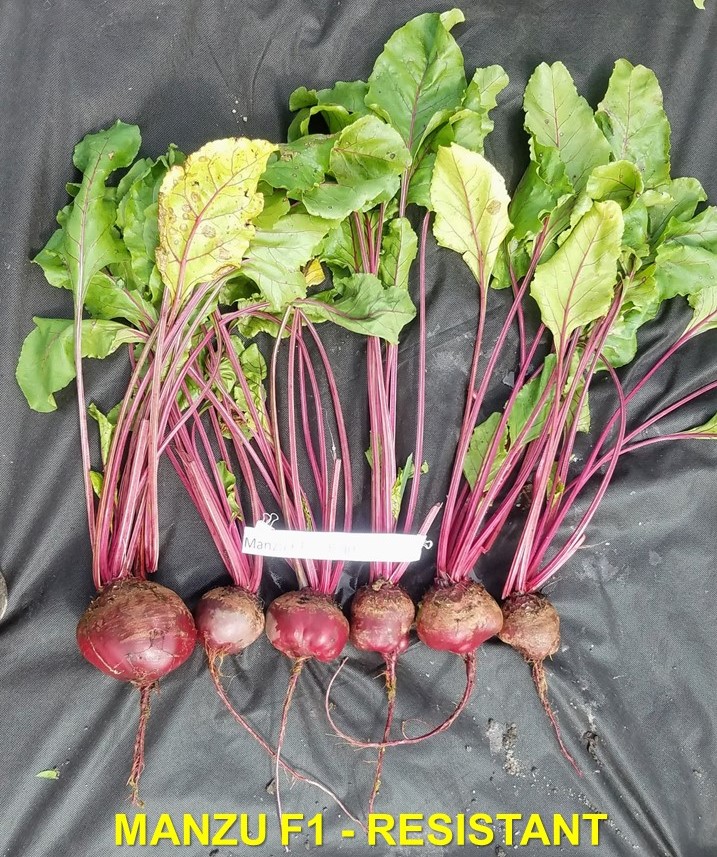
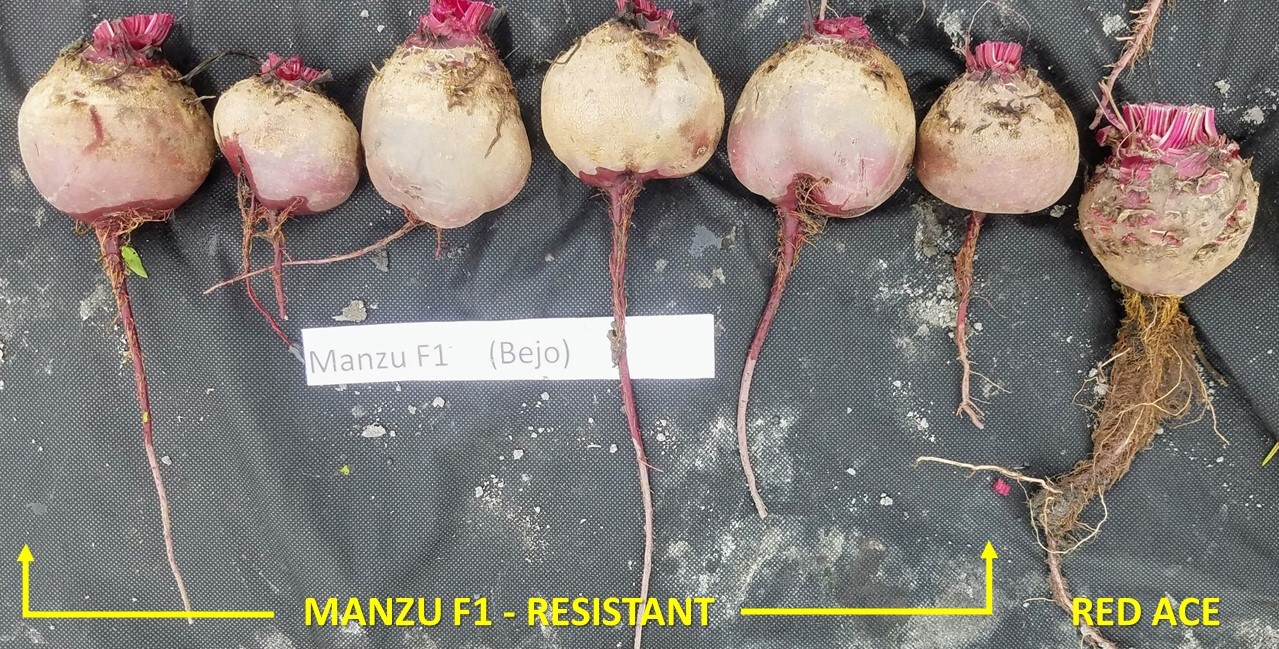
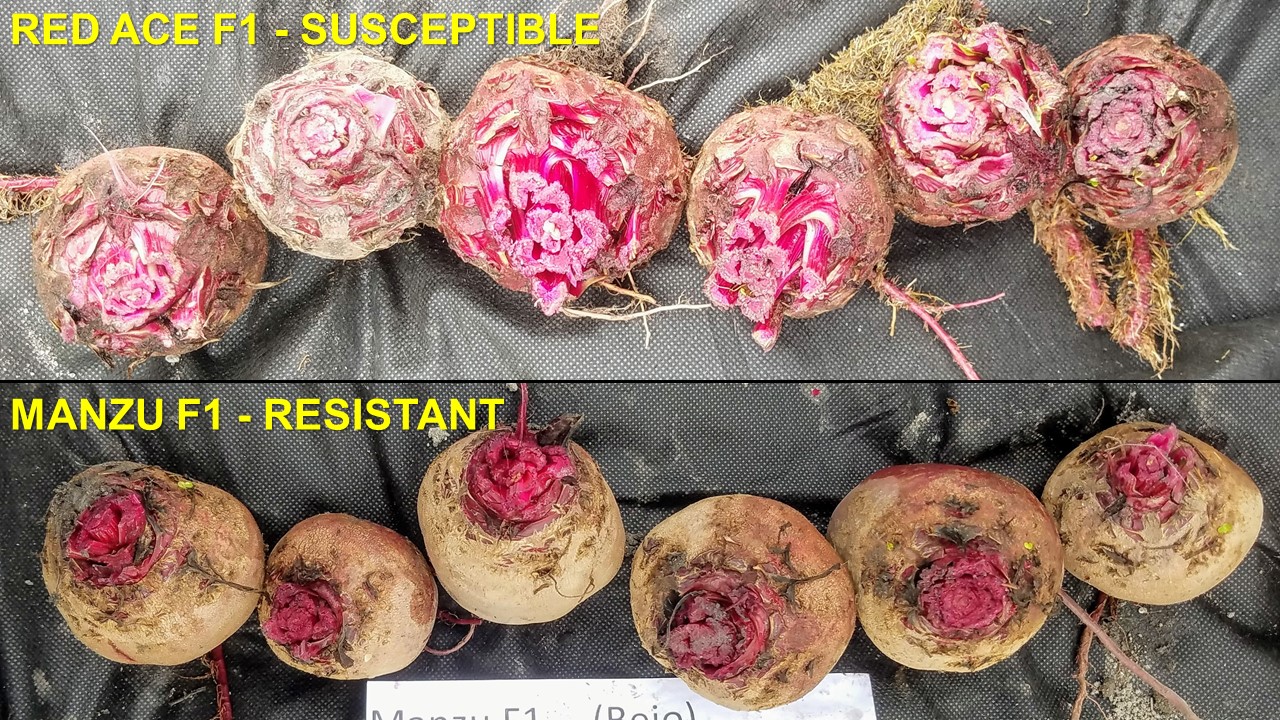
Palau F1 (Bejo, ~52 days, Rhizomania resistant)
Taproots were much less hairy then the susceptible variety (Figures 12 and 13) with less petiole scarring down the side (Figures 13 and 14). Root shape was variable (Figure 13).
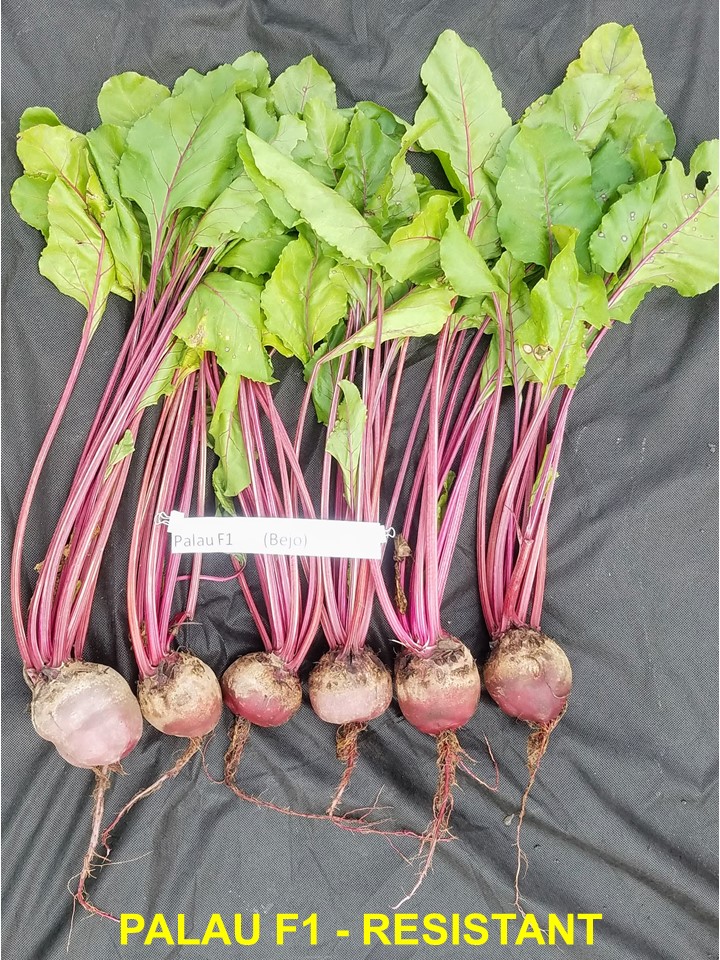
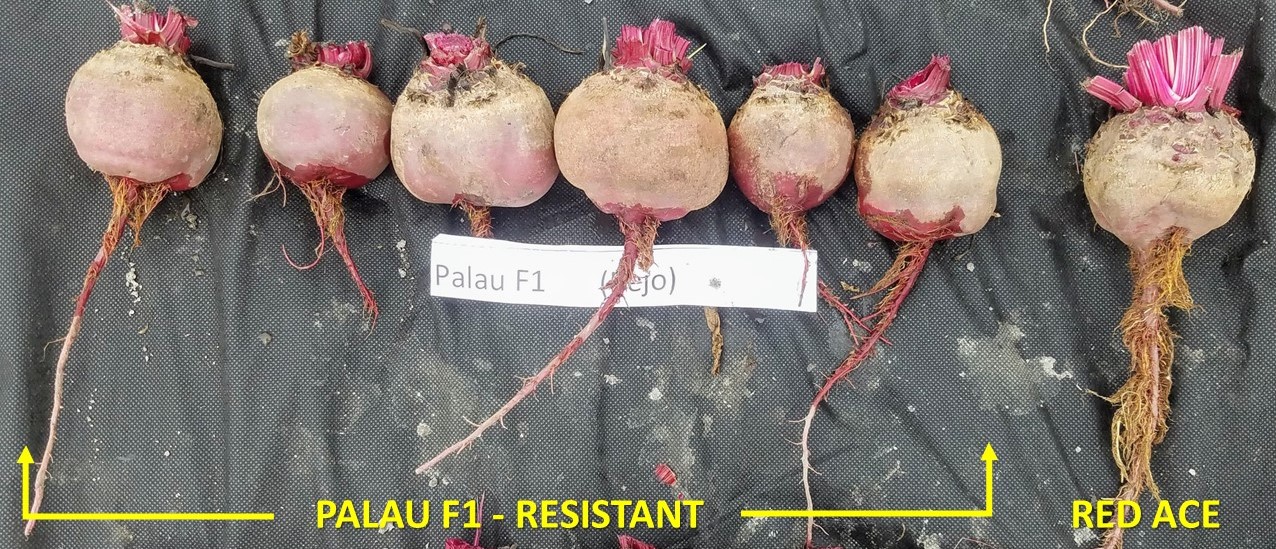
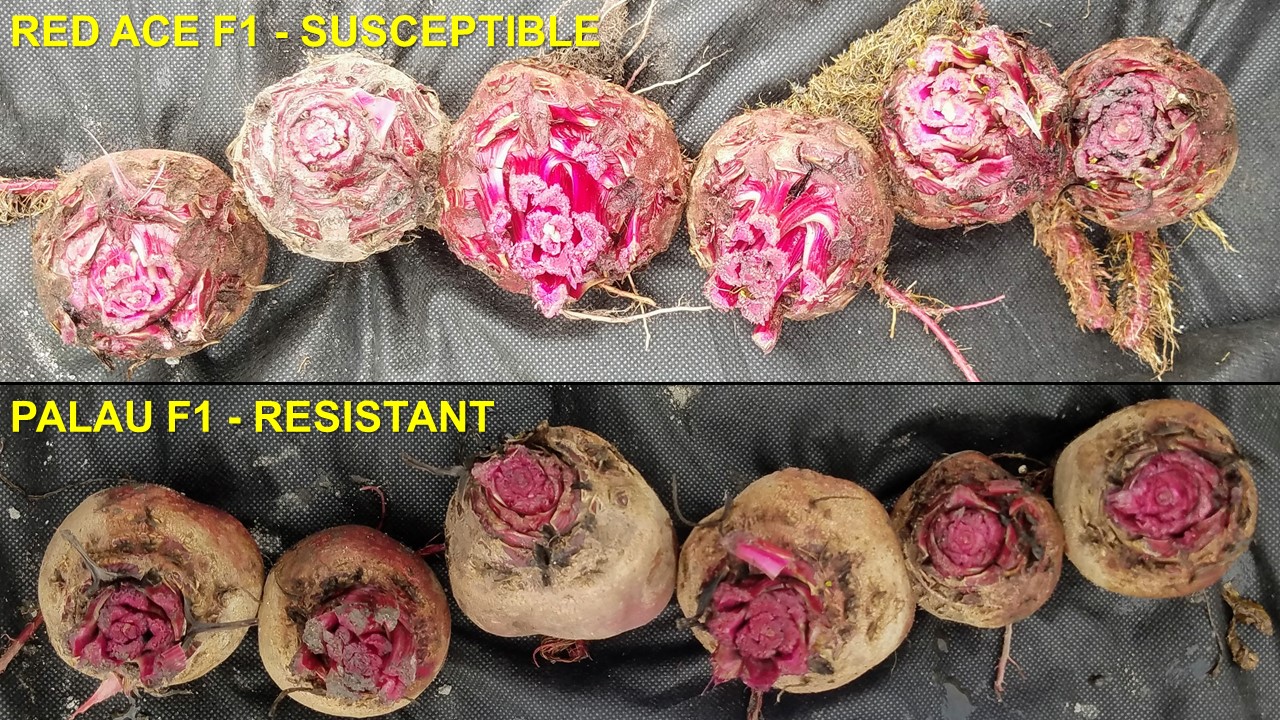
If you see symptoms of Rhizomania in your table beets, please consider submitting a sample of beets with symptoms to MSU Plant & Pest Diagnostics.



 Print
Print Email
Email



